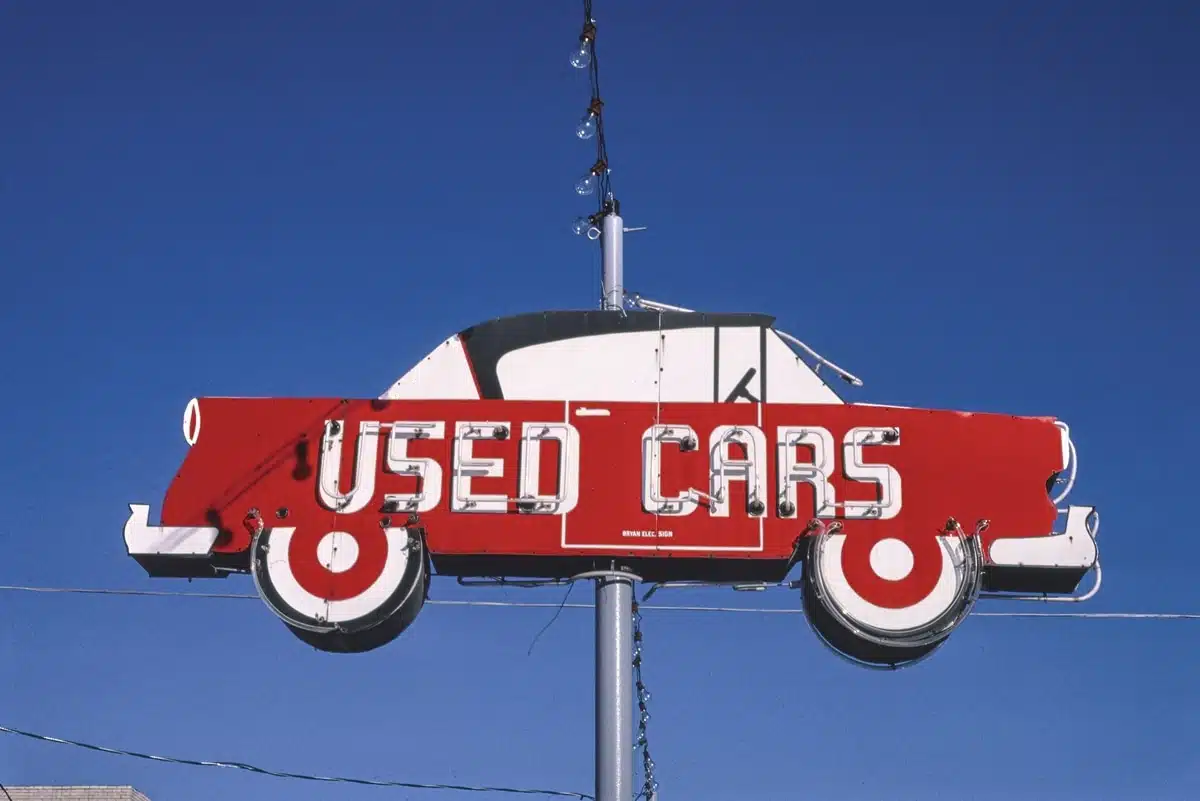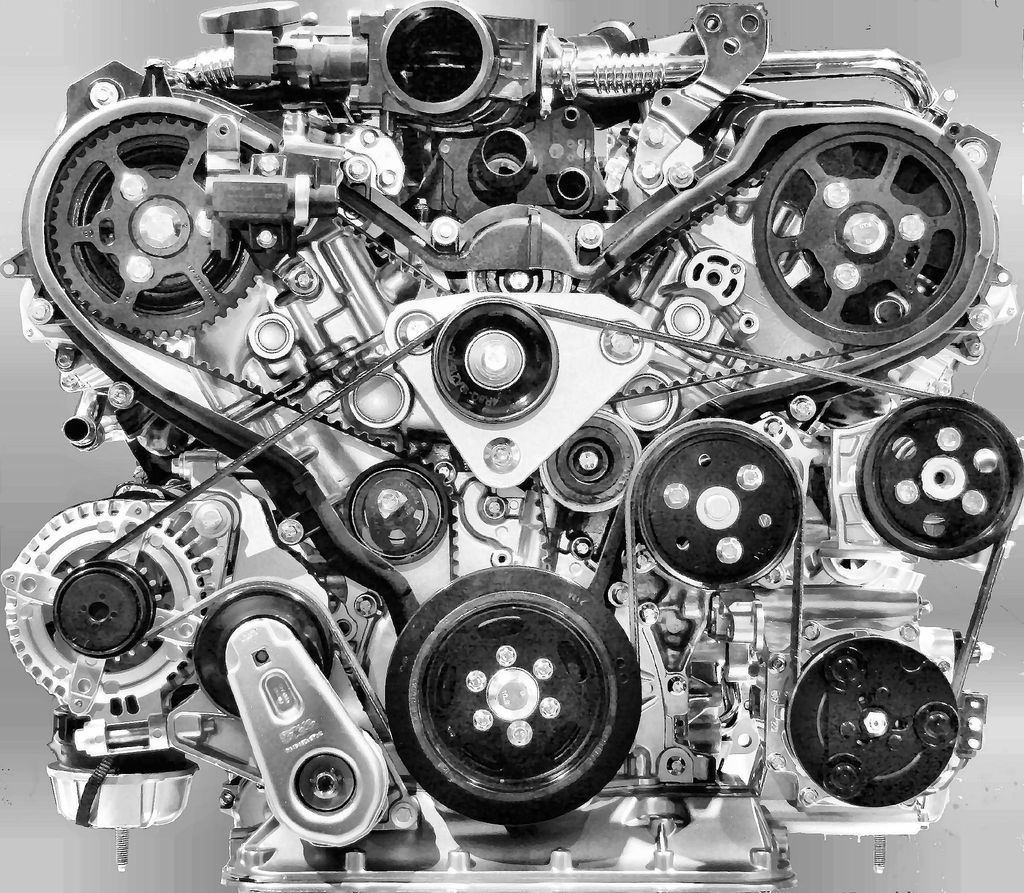
Buying a car is a significant financial commitment, and how you choose to finance it can dramatically impact your long-term budget. Many buyers often fixate solely on the monthly payment, inadvertently overlooking the critical fine print—specifically, the interest rate—that can quietly add thousands to the overall cost over the loan’s lifetime. Given the wide variations in interest rates, fees, and loan conditions across different lenders, approaching the car-buying process with a clear strategy for negotiation is not just beneficial, but truly essential for your financial well-being.
Navigating the world of auto loans doesn’t have to be overwhelming. With the right preparation and a confident approach, you can transform what might seem like a daunting task into a financially advantageous experience. Understanding the mechanics of car financing and knowing how to effectively engage with both lenders and dealerships empowers you to secure terms that are not only favorable but also directly aligned with your financial health. This guide will walk you through the essential steps, ensuring you’re well-equipped to command the best possible deal.
Before you even step foot into a dealership or submit an application, there’s crucial groundwork to be done. The power to negotiate a better interest rate begins long before the final handshake. By taking proactive steps to understand your financial standing, research the market, and prepare your approach, you put yourself in a position of strength, ready to save hundreds, or even thousands, of dollars over the life of your vehicle loan. Let’s dive into these foundational elements that will pave your way to a smarter auto loan.

1. **Check Your Credit Score and History**Your credit score stands as one of the most pivotal factors lenders consider when determining the interest rate and overall terms they will offer you. It acts as a numerical representation of your creditworthiness, with a higher score indicating a lower risk to lenders. Consequently, a stronger credit score significantly increases your likelihood of qualifying for a lower Annual Percentage Rate (APR), which directly translates into reduced borrowing costs over the life of your loan.
Before you begin shopping for a car or even apply for a loan, it’s wise to review your credit reports. You can obtain free copies from the nationwide credit reporting companies: Experian, TransUnion, and Equifax. Carefully scrutinize these reports for any errors or inaccuracies; even minor discrepancies can affect your perceived creditworthiness. If you find any, dispute this information promptly to see if it can be removed or corrected, as a successful dispute can improve your credit profile.
To truly understand your standing, familiarize yourself with the FICO® ScoreΘ ranges that lenders often use as benchmarks. For instance, Experian’s State of the Automotive Finance Market for the third quarter of 2023 reported that the average interest rate for a new car was 5.61% for borrowers with the best credit scores, while those with the lowest credit scores faced an average of 14.17%. This stark contrast highlights the financial impact of your credit health.
If your credit score isn’t where you want it to be, and your vehicle purchase isn’t immediately urgent, consider dedicating some time to improving it. Practical steps can make a difference: pay down high-interest credit card balances to lower your credit utilization ratio (aim for below 30%), make all payments on time (payment history is the most critical factor), and keep older accounts open as the length of your credit history also influences your score. A few months of focused effort can substantially strengthen your credit profile.
Even if your score isn’t perfect, taking these few months to strengthen it can help you qualify for more favorable terms and save you more money over time. This proactive approach not only positions you as a more attractive borrower but also directly empowers you to negotiate a better deal on your auto loan, potentially saving you thousands of dollars in interest over the vehicle’s financing period.
Read more about: Financial Scrutiny: High Stakes and Hard Lessons from 14 Music Icons’ Ventures into the Volatile World of NFTs and Crypto

2. **Know How Much Car You Can Afford (Total Cost of Ownership)**When evaluating an auto loan, it’s incredibly easy to fixate solely on the appealingly low monthly payment. However, truly savvy car buyers understand that this is only one piece of a much larger financial puzzle. To gain a comprehensive understanding of what a car will genuinely cost you, you must factor in the total cost of ownership. This includes not just the loan payments, but also ongoing expenses such as insurance, maintenance, fuel, taxes, depreciation, and any available tax credits for specific vehicles.
Start by taking a close look at your budget to estimate how much you can reasonably spend on a new car each month. Evaluate your current income and expenses, ensuring you also allocate sufficient room for other crucial financial goals. This includes paying off existing debt, investing for retirement, and building up savings for emergency expenses and other short-term needs. A responsible budget ensures your car payment doesn’t strain your finances or derail other important objectives.
Next, dive into the various components that contribute to the total cost. Loan payments, as mentioned, depend on your loan amount, term, and interest rate. Auto insurance is another significant factor, with premiums varying widely based on the make, model, and age of your vehicle, as well as your location and driving record. It’s crucial to get quotes from multiple insurance carriers early on to understand what to expect annually. According to recent national data, average annual full coverage can be about $2,014, while minimum coverage runs around $622.
Maintenance and repairs are also inevitable costs that accrue over time. While every car requires upkeep, older vehicles typically incur these expenses more regularly. Buying an older car might save you upfront costs, but you must budget for potential mechanical issues. Fuel expenses depend on how much you drive, your vehicle’s fuel economy, and the type of fuel it requires. For those considering an electric vehicle (EV), research the costs of installing a home charger and the ongoing electricity expenses; qualifying EVs may also be eligible for a federal tax credit of up to $7,500, which can offset a higher purchase price.
Finally, consider depreciation—the rate at which your car loses value over time. New cars typically depreciate faster, with some models losing 50% or more of their value in the first five years. This factor is particularly important when comparing loan terms on new versus used automobiles. Utilize auto resource websites such as Edmunds and Kelley Blue Book, which can provide estimates for a vehicle’s total cost of ownership over a five-year period. By looking at the big picture and knowing what you’ll pay to own and operate your car year after year, you can make a truly informed decision.
3. **Research Auto Loans and Interest Rates**When you work with a dealership, their finance department can indeed shop around for your vehicle loan, gathering rates from multiple lenders on your behalf. While this might seem convenient, it’s vital to remember that dealers are not legally required to offer you the absolute best rates for which you qualify. In many cases, the rate you are quoted may even include compensation for the dealer, effectively increasing your borrowing cost for their service in arranging the financing.
As a result, a highly effective strategy is to proactively shop around and compare auto loan interest rates for yourself, even before you set foot on the dealership lot. This pre-dealership research is crucial for understanding current market rates. As of early 2025, the average interest rate on a 60-month new car loan in the U.S. stands at 7.53%. However, this figure can fluctuate significantly based on various factors, including the specific lender, your individual credit score, the chosen loan term, and whether you’re purchasing a new or used vehicle.
Consider an illustrative example: a buyer financing a $30,000 new car at 7.53% over five years will pay substantially more in total interest than someone financing a $20,000 used vehicle at 9.0%. Even though the used car loan has a higher interest rate, the lower principal loan amount results in less overall interest paid. This demonstrates why focusing solely on the interest rate in isolation can be misleading; the loan amount also plays a critical role. Used cars are often more affordable upfront and can be just as dependable, potentially leading to a lower total cost.
To arm yourself with the best possible information, actively research and compare rates from a diverse array of financial institutions, including traditional banks, local credit unions, and online lenders. Online tools like Bankrate or readily available rate sheets from your local credit union can provide excellent benchmarks for understanding competitive rates in your region. Many lenders also offer prequalification tools that utilize a soft credit inquiry, which won’t impact your credit score, to give you an estimate of your potential rate and monthly payment.
Armed with this comprehensive understanding of market rates and what constitutes a competitive offer, you place yourself in a much stronger negotiating position. You’ll be able to confidently identify a fair deal and, just as importantly, spot one that isn’t worth your time, ensuring you secure the most advantageous financing terms available for your unique situation.
Read more about: Navigating the Digital Road: A Consumer Reports Guide to Online Car Buying and Selling

4. **Get Preapproved from Multiple Lenders**One of the smartest and most empowering moves you can make before even walking into a dealership is to get preapproved for an auto loan from several different lenders. While prequalification can provide you with a basic estimate of how much car you might afford (often based on a soft credit inquiry that doesn’t impact your score), preapproval offers a much clearer, more concrete picture of what your actual loan terms will look like.
A preapproval process typically involves a hard credit inquiry, which provides the lender with more detailed information about your creditworthiness and usually results in a more firm offer. Although hard inquiries can temporarily impact your credit score, it’s a manageable effect. To minimize this impact, it’s advisable to submit all your preapproval applications within a short period—generally between 14 to 45 days. This way, multiple inquiries for the same type of loan will typically be combined for credit-scoring purposes, treating them as a single inquiry.
The true power of having multiple preapproval offers in hand lies in the significant leverage it provides you during negotiations with both lenders and dealerships. When you arrive at a dealership with a preapproved offer from an external institution, you immediately transform into what they perceive as a “cash buyer.” This shifts the focus of the negotiation away from financing terms and squarely onto the vehicle’s purchase price.
Presenting a preapproval offer indicates that you are serious about buying a car and have already secured competitive financing. This concrete benchmark allows you to challenge any financing offers made by the dealership directly. You can confidently ask if the dealership can match or, even better, beat the rate and terms you’ve already secured. This competition often works in your favor, as dealerships are motivated to earn your business and may offer more favorable terms to secure the sale.
While a preapproval isn’t a final, binding offer until you formalize the loan, it serves as a robust benchmark. It provides you with a realistic budget, helps you avoid being pressured into a less favorable loan, and significantly enhances your bargaining power. This strategic move ensures you approach the negotiation table from a position of strength, ready to compare and secure the best possible financing deal.
Read more about: Exposing the 15 Sneaky Car Dealership Tricks That Cost You Billions: A Consumer Reports Guide to Savvy Car Buying
5. **Factor in Hidden Fees and Add-Ons**Even if you’ve diligently researched and secured a seemingly excellent auto loan interest rate, hidden fees and unnecessary add-ons can quietly inflate the total cost of your loan, often by hundreds or even thousands of dollars. Lenders and dealerships frequently introduce these additional expenses during the final stages of paperwork, precisely when buyers are eager to close the deal and may be less inclined to scrutinize every line item.
Being vigilant and knowing what to look for is paramount. Some of the most common charges you should watch for include documentation fees. These are administrative costs charged by the dealer for processing paperwork. While some states cap these fees, it’s always worth checking your state laws and, more importantly, asking for a detailed breakdown of what these fees cover. Unjustified or excessive documentation fees can be a red flag.
Another common charge is dealer prep fees, sometimes disguised as “vehicle preparation” or “delivery” charges. These fees ostensibly cover the cleaning, inspection, and preparation of the car for delivery. However, it’s important to recognize that such costs are often already factored into the Manufacturer’s Suggested Retail Price (MSRP). You have every right to contest these fees, as they typically represent pure profit for the dealership and are generally not legitimate additional costs.
Extended warranties are also frequently pushed during the closing process. While the peace of mind an extended warranty offers can be valuable to some, they are often costly and may not provide coverage that genuinely justifies the price. Before accepting one, consider if setting aside an emergency fund might be a more cost-effective way to cover potential repairs, or compare the dealership’s offer with third-party warranty providers, who may offer better terms and lower prices for comparable coverage.
Furthermore, be wary of various add-on products and services like rust-proofing, paint protection, tire warranties, and key replacement plans. Dealers often present these as “must-haves” or essential upgrades. Always ask if these are optional and do not hesitate to refuse them if they do not align with your specific needs or budget. Many of these services can be purchased independently at a lower cost, or you might decide you don’t need them at all. Scrutinizing these high-profit items is essential, as they significantly inflate the total amount you’ll finance and pay over the life of your loan.
Read more about: The 14 Most Common Mistakes 15 Out of 20 First-Time Car Buyers Make: A Lifehacker’s Guide

6. **Utilizing Smart Negotiation Tactics**Moving from meticulous preparation to active negotiation requires a strategic mindset. Your thorough groundwork, including understanding your credit, researching market rates, and securing preapprovals, provides you with a significant amount of leverage. Remember that dealerships and lenders are ultimately looking to earn your business, so your objective is to make them compete for it by demonstrating you are an informed and prepared buyer.
One of the most common pitfalls buyers face is focusing solely on the monthly payment. Dealers often try to steer the conversation in this direction because it can effectively obscure a longer loan term or a higher interest rate. Instead, shift the focus by negotiating the total cost of the loan and the interest rate first. Once these primary terms are agreed upon, you can then consider what that means for your monthly payments, ensuring the total cost aligns with your financial goals.
For optimal results, it is highly advisable to separate your negotiations into distinct components: the vehicle’s purchase price, the value of any trade-in, and the financing terms. This separation prevents the dealership from bundling costs together, which can make it difficult to discern if you’re getting a fair deal on each element. By tackling one aspect at a time, such as securing the outright purchase price, you can ensure a competitive agreement before moving on to financing.
When discussing price, always insist on negotiating the “out-the-door” price. This comprehensive figure includes the vehicle’s actual selling price, all applicable taxes, registration fees, and any other unavoidable charges. Dealers sometimes obscure these costs or add them in at the last minute. By negotiating the full cash price upfront, you ensure transparency and establish a clear benchmark against which you can compare your market research, clarifying the actual amount you will be paying for the car.
Your pre-approved loan offer from an external lender is a potent negotiation tool. Presenting this offer to the dealership’s finance department signals that you have already secured competitive financing and provides a concrete benchmark. You can confidently ask if the dealership can match or, ideally, beat the rate and terms you’ve already secured. This strategy leverages competition to your advantage, often prompting the dealer to offer more favorable terms to secure your business.
Finally, cultivate the willingness to walk away from a deal that doesn’t meet your expectations. This is perhaps one of your strongest negotiation assets. If the terms aren’t right, or if you feel undue pressure, clearly state your intent to leave. Being prepared to disengage shows you are serious about securing fair terms and can often prompt a dealership to offer improved incentives on the spot, rather than losing a sale. Additionally, if your credit score is a concern, bringing a trusted co-signer with solid credit can improve your odds of landing a competitive rate, though both parties must understand the legal responsibilities involved.
Read more about: Consumer Alert: 13 Essential Safeguards Against the Hidden Dangers of Buying a Car Sight Unseen Online
7. **Exploring Other Ways to Reduce Your Interest Rate**Even after employing smart negotiation tactics, there are additional strategic actions you can take to further reduce your auto loan interest rate. Lenders determine the interest rate they offer based on the perceived risk you present of defaulting on your monthly payments. Therefore, minimizing this risk is key to securing more favorable terms.
One highly effective method is to make a larger down payment. The more money you put down upfront, the less you need to borrow from the lender. This not only reduces the principal amount of your loan but also significantly lowers the lender’s risk exposure. With less money at stake for the lender, you become a more attractive borrower, which can directly translate into qualifying for a lower interest rate and substantial savings on interest over the life of the loan.
Another approach is to reduce the overall sales price of the vehicle. This can be achieved in a couple of ways. You might consider opting for a less expensive car, particularly if your credit score isn’t ideal and you wish to avoid a higher interest rate until your financial standing improves. Alternatively, you can actively reduce the sales price by proactively declining unnecessary add-ons, such as extended warranties, service contracts, or gap insurance, which were discussed in Section 1. These items inflate the total amount you finance, and rejecting them can significantly lower your borrowing costs.
Selecting a shorter repayment term is a powerful way to reduce your interest rate. While longer loan terms typically come with lower monthly payments, they are often accompanied by higher interest rates. This is because longer terms increase the lender’s interest rate risk—the possibility that market interest rates will rise over the extended period, negatively impacting their revenue. If your budget allows for a higher monthly payment, choosing a shorter term can result in a considerably lower interest rate and, crucially, less total interest paid over the life of the loan. However, always ensure the higher payment doesn’t overly strain your budget or compromise other financial goals.
Finally, if you find your credit score is less than ideal or if you simply want to increase your negotiating power, consider asking a creditworthy individual to co-sign the loan with you. A co-signer agrees to take responsibility for making payments if you cannot, thereby reducing the risk of default for the lender. This decreased risk often allows you to qualify for a lower interest rate than you might achieve on your own. It is vital, however, that both you and your co-signer fully understand the serious implications: the loan appears on their credit report, and any payment issues will negatively impact their credit history.
Read more about: Mastering Your Premiums: 12 Proven Ways to Slash Car Insurance Costs, Including Top Models and State-Specific Strategies for 2025

8. **Timing Your Vehicle Purchase Wisely**Strategic timing can significantly impact the final price you pay for a vehicle and the loan terms you are offered. Market cycles, dealership quotas, and broader economic factors can all create opportune moments to secure a more favorable deal. Being aware of these windows can give you a distinct advantage.
One significant external factor currently influencing vehicle prices is the potential impact of rising tariffs on imported vehicles and parts. Analysts have warned that new tariff increases could lead to substantial price hikes, with some specific models potentially becoming up to $10,000 more expensive in the near future. If you’ve been contemplating a car purchase, locking in a deal now could be a smart move to avoid these sharp increases, which would affect not only the purchase price but also the total amount you need to finance.
Beyond tariffs, certain periods within the sales calendar tend to offer more favorable terms for buyers. Dealerships often have monthly, quarterly, and annual sales targets to meet. As these deadlines approach, particularly towards the end of the month, quarter, or year, sales staff and managers may be more motivated to offer incentives, larger discounts, or better financing terms to hit their quotas. This urgency can translate directly into savings for a prepared buyer.
Similarly, holiday weekends—such as Labor Day, Memorial Day, or Black Friday—are frequently associated with special promotions and sales events. These periods can be ideal for scoring deals, especially on outgoing models as dealerships make way for new inventory. The end of a model year, when new versions are released, also presents an excellent opportunity to find discounts on the previous year’s models, as dealers are eager to clear their lots.
Another less publicized but effective timing strategy is to shop when inventory is high and demand is relatively low. This typically occurs during slower sales months, such as January or February, following the busy holiday season. When dealerships have an abundance of cars and fewer buyers, your negotiating power increases considerably. Dealers are often more eager to make sales during these slower periods, which can lead to better pricing and more flexible loan terms. By aligning your purchase with these advantageous times, you can maximize your savings.
Read more about: Beyond the Badge: Why a ‘Bargain’ Used Luxury Car Can Lead to Unexpected Financial Headaches and Repair Nightmares
9. **Considering Refinancing Later On**Even after you’ve secured an auto loan, your journey toward optimal savings doesn’t necessarily end. The good news is that you always have the option to refinance your loan later on. Refinancing can be a powerful post-purchase strategy, especially if your financial situation has improved since your initial purchase or if market interest rates have dropped. It offers a pathway to potentially secure a better deal and save money over the remaining term of your loan.
Refinancing involves taking out a new loan, typically with a different lender, to pay off your existing auto loan. This new loan usually comes with a new interest rate and new terms. By doing so, you could potentially reduce your monthly payment, shorten your loan term, or most importantly, lower your interest rate. For example, if you took out your initial financing when your credit score was not at its peak, or during a period of higher interest rates, improving your credit and then refinancing can significantly cut your total interest costs.
To maximize the benefits of refinancing, it’s wise to take proactive steps to improve your credit score before applying. Begin by checking your credit report to identify any areas needing attention, such as delinquent accounts or high credit utilization. Promptly dispute any inaccurate or fraudulent information you find, as successful corrections can quickly boost your score. Crucially, focus on paying all your bills on time, every time, as payment history is the most impactful factor in your credit score. Additionally, work on paying down high-interest credit card balances to lower your credit utilization ratio, aiming for below 30% for optimal results.
Once your credit profile has strengthened, shop around and compare refinance rates from multiple lenders—banks, credit unions, and online lenders—just as you did for your original loan. This competitive shopping ensures you find the most favorable terms available to you. Many lenders offer prequalification tools that provide estimated rates without impacting your credit score, allowing you to gauge potential savings before committing to a hard inquiry. Once you find the right deal and are approved, the new lender will pay off your original loan.
Before you commit to refinancing, carefully weigh any fees or penalties associated with your current loan, such as prepayment penalties. While refinancing can lead to substantial long-term savings, these upfront costs can sometimes offset a portion of those benefits. By conducting thorough research, improving your credit, and comparing offers, you can make an informed decision that significantly enhances your financial well-being and reduces the overall cost of your vehicle financing.
Read more about: Unlock Your Savings: 12 Actionable Steps to Negotiate the Best Used Car Loan Interest Rate
10. **Thoroughly Reviewing and Finalizing the Loan Agreement**After all the research, negotiation, and strategizing, the final step—reviewing and signing the loan agreement—is arguably the most critical. This document is a legally binding contract, and overlooking any detail could lead to unexpected costs or unfavorable terms down the road. Diligence at this stage is paramount to ensure that all agreed-upon terms are accurately reflected.
Before putting pen to paper, meticulously check every line item in the loan contract against the verbal agreements you reached. Verify the final Annual Percentage Rate (APR) to ensure it matches the lowest rate you negotiated or were pre-approved for. Confirm the total loan amount, the exact loan term in months (e.g., 60 or 72 months), and scrutinize any associated fees, such as origination fees or processing charges. If you spot any discrepancies, question them immediately and insist on corrections before proceeding; do not hesitate to walk away if issues are not resolved to your satisfaction.
An essential part of this final review is confirming the payment schedule. Verify the precise monthly payment amount, making sure it aligns with your budget and calculations. Double-check the designated due date for each payment, as consistency with your income cycle can prevent late fees. Lastly, confirm the total number of payments required to fully repay the loan. Having a clear understanding of this schedule ensures there are no surprises and that the payment structure fits comfortably within your financial plan.
To finalize the purchase and loan agreement, you will typically need to provide several standard documents. These commonly include a valid driver’s license, proof of current vehicle insurance (which you should have already secured), and the agreed-upon down payment. Depending on the lender’s specific requirements and your individual circumstances, additional documentation such as proof of residency, income verification (like recent pay stubs or tax returns), or a social security card might be requested. Having all necessary paperwork prepared in advance can significantly streamline the signing process and prevent unnecessary delays.
Finally, before signing the very last document, take a moment for a last-minute, thorough inspection of the vehicle itself. Ensure its details precisely match those listed in the contract. This includes verifying the Vehicle Identification Number (VIN), the make, model, trim level, and any specific features, accessories, or add-ons that were part of your agreement. This final physical check confirms that the vehicle you are taking possession of is indeed the one you agreed to purchase and that all contractual details are accurate. This diligent review at the close of the transaction can prevent future complications and ensures that your significant investment is completed correctly.
Read more about: Unlock Your Savings: 12 Actionable Steps to Negotiate the Best Used Car Loan Interest Rate
Negotiating the best terms for your auto loan is more than just about securing a reasonable interest rate; it’s a critical step in protecting your long-term financial health and ensuring a financially sound vehicle purchase. By diligently doing your homework, comparing all your options, and confidently approaching every conversation with lenders and dealerships, you empower yourself to make informed decisions. This proactive and strategic effort now can literally save you thousands of dollars over the life of your loan and pave the way for a smoother, more satisfying car-buying experience. Take control of your auto loan, and drive away with confidence.




